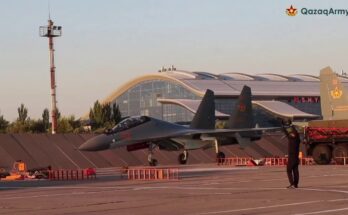
A high-stakes competition is underway for South Korea’s first large-scale electronic warfare (EW) aircraft program, a project valued at 1.78 trillion won ($1.31 billion). Two domestic consortia are vying for the contract, with proposals expected to be submitted in early September.
The program, known as the ‘Electronic Warfare Aircraft (Block-I) System Development Project,’ will convert a mid-sized commercial jet into a special-mission platform able to detect, analyze and jam hostile radars and communications to degrade integrated air defenses and disrupt command networks in wartime. DAPA (the Defense Acquisition Program Administration) began accepting bids in mid-July and cleared the program’s detailed development plan in June, formalizing a competitive tender this summer.
The two main contenders are:
- A partnership between Korean Air and LIG Nex1: Under this team, Korean Air would be responsible for modifying a mid-sized civilian aircraft and handling system integration and production. LIG Nex1 would lead the development and installation of the EW systems.
- A rival consortium of Korea Aerospace Industries (KAI) and Hanwha Systems: This team offers a joint approach, with KAI specializing in airframe modification and system integration, while Hanwha Systems focuses on developing the electronic equipment.
Both proposals have been illustrated on the Bombardier Global 6500 business jet, underscoring industry expectations that a Global-class airframe is the likely platform. The Bombardier Global business jet family is a popular choice for military programs, including the U.S. Army’s HADES, the U.S. Air Force’s BACN, and Sweden’s GlobalEye. The aircraft platform has been adopted for a variety of missions, primarily in the areas of ISR and EW.
The EW aircraft effort traces back to April 2023, when DAPA approved a plan to develop an indigenous electronic-warfare aircraft between 2024 and 2032 as part of a broader electromagnetic-spectrum resilience push. Early outlines envisioned four aircraft; more recent reporting indicates delivery of four by 2034, suggesting fielding in the early-to-mid-2030s depending on development progress.
The EW aircraft competition is a major step for South Korea’s defense industry because it fits into the country’s broader “K-defense” strategy. This strategy is an aggressive, government-backed effort to transform South Korea from a major importer of military technology into a leading global arms exporter.
Proposals are due in early September 2025, industry reporting in Seoul points to a government down-selection as soon as October, after which full-scale system development and airframe modification would begin.
A military history enthusiast, Richard began at Forecast International as editor of the World Weapons Weekly newsletter. As the Internet grew in importance as a research tool, he helped design the company's Forecast Intelligence Center and currently coordinates the EMarket Alert newsletters for clients. Richard also manages social media efforts, including two new blogs: Defense & Security Monitor, covering defense systems and international issues, and Flight Plan, which focuses on commercial aviation and space systems. For over 30 years, Richard has authored the Defense & Aerospace Companies, Volume I (North America) and Volume II (International) services. The two books provide detailed data on major aerospace and defense contractors. He also edits the International Contractors service, a database that tracks all the contractors involved in the programs covered in the FI library. More recently he was appointed Manager, Information Services Group (ISG), a new unit that encompasses developing outbound content for both Forecast International and Military Periscope.



